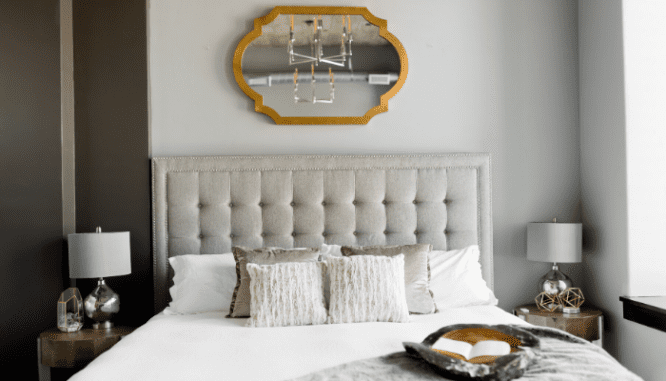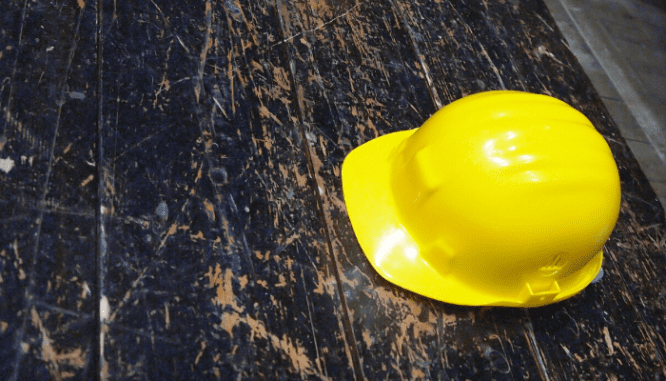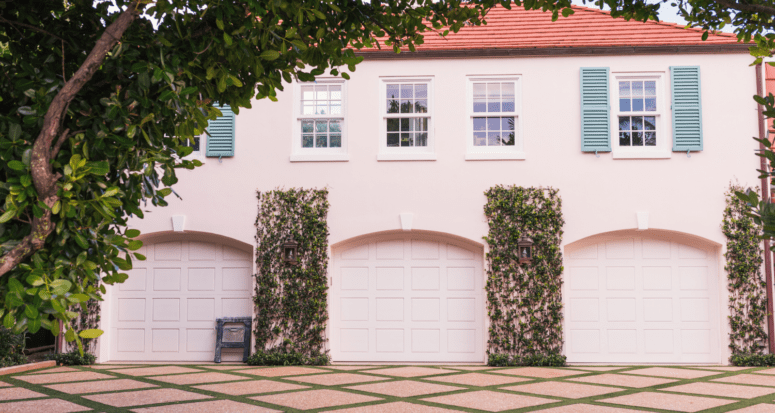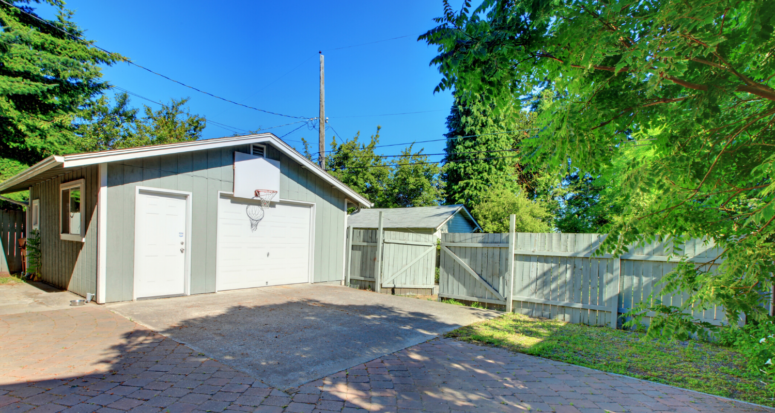What’s the ROI on Adding a Guest House? 6 Homeowners Gave us the Scoop
- Published on
- 7 min read
-
 Presley Attardo Contributing AuthorClose
Presley Attardo Contributing AuthorClose Presley Attardo Contributing Author
Presley Attardo Contributing AuthorPresley is a Seattle based writer covering interior design trends, home improvement, and market updates. She has lived in San Francisco, Los Angeles, Chicago, and Washington, D.C., giving her a unique perspective on the diversity of U.S. real estate.
Building a guest house is no walk in the park: it takes a great deal of research, time, money, and mental fortitude. Thankfully, the ROI on adding a guest house is extremely promising to make up for it.
To help you picture your guest house’s earning potential, we’ve interviewed six homeowners across the country currently enjoying the return on investment from their additions. We also consulted top real estate agent Taylor Cresswell to share his professional insight from selling 86% more properties than the average agent in Tampa, Florida, a hot spot for guest house additions.
Whether you’re looking for extra income or multi-generational family savings, we’ll help you set your guest house up for a successful return on investment.

High ROI starts with a tactical building strategy
Return on investment measures how successful an investment is in the form of a percentage by comparing initial investment and operating costs to profit. To calculate the ROI on adding a guest house, you subtract annual expenses from the rental income (this is your cash flow), add equity build, and then divide by the initial cost of the investment (the total building cost).
ROI = (annual rental income – annual expenses) + equity build
total initial investment (building cost)
The first step to achieving a high ROI on a guest house is to keep your initial investment comparatively low to the income you expect to generate. Build with practical, durable materials to keep building costs down. That being said, don’t skimp out on comfort essentials like insulation and decent lighting. Your guest house’s residents won’t stick around if the space feels clinical.
The more efficiently you build your guest house, the faster you’ll see a high return on investment percentage. Here are a few considerations to influence your building strategy:
- Smaller guest houses see better returns:
Cresswell examines there’s a market cap on guest house size when it comes to ROI; “I’d say the most efficient is between 400 to 600 square feet . . . The bigger the square footage, the more you have to put into flooring walls, roof, foundation, everything.” The lower your building costs, the quicker you’ll recoup the costs with rental income.
- Durable, efficient materials will reduce maintenance costs over time:
Build with low cost, durable materials to maximize your ROI. For flooring, choose faux hardwood, vinyl tile, or bamboo to keep project costs low. Invest in proper insulation and energy-efficient appliances to reduce the cost of added utilities over time.
- Stylish decor attracts short-term guests:
If you’re adding a guest house for Airbnb, VRBO, or HomeAway, invest in Instagram-able interior design to make your listing stand out. A unique picture, inviting hanging plants, or subtle overall theme will attract more guests and increase your occupancy rate.
- Mid-market homeowners benefit most when it’s time to sell:
Cresswell shares that the demand for guest houses is strongest in mid-market homes, around the $200,000 to $350,000 range in Tampa, where buyers prioritize affordability. Most buyers want a guest house to rent out for extra income or to house senior family members.
| CASE STUDY: Leslie Fox (Raleigh, NC) |
| Guest house type: Above garage unit, detached from house
Square feet: 550 Building cost: $42,000 Usage: Airbnb Return: $2,000 a month on average Advice: “Don’t expect it to be super easy or simple. Get a few quotes before moving forward and understand that if it’s fully outfitted to be lived in, it will be a pretty involved project and probably take 3 months minimum. Pick a time when your life can manage that additional work.” |

Rent your guest house for stable income
The most straightforward way to see a return on investment on your guest house is to rent it out to long-term tenants. Long-term rentals require little maintenance and carrying costs. Simply set a fair rental price based on comparable rentals in your area and set a lease term fitting to your local laws. With a separate meter, you can charge your tenants accurate utilities, keeping the guest house totally self-contained.
You’ll see the greatest ROI with a small budget guest house project than you will with a big one.
To illustrate, if you rent your affordable $20,000 one-bedroom guest house out at the median national rent of $962 a month, you’ll recoup the building costs in just under two years. On the high end, if you invest $200,000 building a two-bedroom guest house, it’ll take closer to 10 years to recover full building costs, even in a competitive market like Seattle with a median rent of $1,700 a month.
In addition to bringing in extra income, renting your guest house is a fantastic, low-risk opportunity to break into real estate investment. Test your landlord abilities, learn the relevant laws and taxes, and track your income to expenses. When you’re ready for the big leagues, put the profit from the guest house towards a down payment for a separate rental property.
| CASE STUDY: Rick Albert (Los Angeles, CA) |
| Guest house type: Garage conversion
Square feet: 350 Building cost: $75,000 Usage: Owner occupied, main house is rented Return: “Tenants live in the main house and pay 69% of our mortgage, property taxes, and insurance.” Advice: “Do what you can to maximize income. This includes washer/dryer hookups (you are already running plumbing), creating a private outdoor yard, and creating privacy (such as where to put windows, etc). Another consideration is making the unit all electric, so you save on splitting the gas meter and/or running the lines. This way the only utility shared is water (assuming you don’t split it).” |

Maximize your price per night with Airbnb
Airbnb, VRBO, and HomeAway flirt the highest possible ROI on adding a guest house. Nearly half of all Airbnb hosts earn an average of $924 a month, with half of hosts earning more than $500 per month. These figures include hosts just renting out a single room; the income of hosts renting out self-contained spaces is likely much higher.
Your success with Airbnb and the likes depends on your listing price and occupancy. How much money you fetch a night and for how many nights each month is largely influenced by your location and competition. Tourist destinations, for instance, attract travelers from all around the world, but are also hubs for investors who professionally run Airbnbs; the competition in these spots is fierce.
Courtney Keene, homeowner and Director of Operations at MyRoofingPal, shares it took some time to optimize her guest house listing in Orlando, Florida:
“It’s a great spot to get travelers and tourists, but as you can imagine, there’s a lot of competition . . . We did have troubles listing it initially. The income was sporadic at first, but it’s more reliable now.”
Check out Airbnb’s estimator tool to see your guest house’s earning potential if you reach 50% occupancy, then scope out your competition with AirDNA.
The free version reveals amenities offered, occupancy rate, and rental type (entire place, private room, or shared room) and $19.95/month includes median monthly revenue, seasonality, and local regulations.
| CASE STUDY: Courtney Keene (Orlando, FL) |
| Guest house type: Garage conversion
Square feet: 700 Building cost: $16,000 Usage: Short-term rental and Airbnb Return: “$500 to $700 per month. I expect that to grow and imagine we’ll recoup our investment within the year.” Advice: “Have an end goal in mind . . . If your goal is to generate income from it, make yourself aware of the building codes you need to adhere to and don’t cut corners. Find listings for similar spaces in your area and see what they’re offering in terms of amenities, because those are the properties you’ll be competing with.” |

Beware of the extra effort and running costs
So you estimate your Portland, Oregon guest house can earn $1,541 a month at 50% occupancy — that’s $3,082 a month at full, double the earnings of the average one-bedroom rental in the city. Fabulous! What’s the catch?
In addition to unpredictable occupancy rates, short-term rentals require more maintenance and ongoing costs than long-term rentals. You’ll need to manage reservation requests, bookings, and guest inquiries. Plus, depending on your level of involvement, you’ll also need to check in guests, clean, restock, and handle the odd issue (like the unlucky scenario of a guest checking out late, leaving no time to clean before the next guest arrives).
Short-term rentals also entail more ongoing costs, detracting from your higher profit:
Consumables:
Hosts are expected to supply a minimum of toilet paper, soap, shampoo, coffee, tea, cooking oil, and trash bags, though it’s advantageous to offer more to compete in your market. Accustomed to hotel service, guests often take home these extras, bumping up your maintenance budget.
Utilities:
Airbnb guests do not pay utilities for their stay. So their 2-hour showers and 24/7 heating benders are on you.
Occupancy tax:
Some states and localities charge an additional tax for short-term rentals.
Host fees:
Airbnb charges 3% per booking; VRBO and HomeAway offer a choice of 5% plus 3% payment processing fee per booking or a $499 annual fee.
Cleaners:
Hosts with a hands-off approach hire cleaners to refresh their unit between guests. Thankfully, you can charge a cleaning fee along with the booking to cover this expense.
| CASE STUDY: Mike Cossette (Austin, TX) |
| Guest house type: Garage conversion, duplex
Square feet: 1,900 Building cost: $430,000 Usage: Airbnb (see Cossette’s listing) Return: Our gross income for the first 10 months was $55,000 . . . We’re expecting to end up between $60K and $62K for a full year which is about 14% ROI, but equity and property value were the biggest returns. Advice: “Stay in your new place for a few nights before you have guests to iron out the details that you can’t predict or know about without having actually stayed there.” |
Live mortgage-free with a hybrid house hack
Get creative with your living situation and the ROI on adding a guest house gets insane. To quickly recoup building costs, some homeowners move into their guest house and rent out their main property, many times covering their mortgage completely. Others embrace a hybrid approach to house hacking, gaining cash flow on top of mortgage coverage.
Lorissa ArgoRay, a homeowner and Nurse Herbalist in Denver, Colorado, shares her and her husband built a 1,000 square foot detached guest house for $180,000 and have generated serious income from the addition:
“We moved into the ADU, rented out the initial house long-term, and Airbnb the main floor of our ADU — house hacking to the max! I get to live mortgage-free, plus am making a lot of extra money in addition!”
Between the rental and Airbnb, the couple has earned $72,000; the monthly income covers their mortgage plus an additional $700 to $1,200 depending on occupancy.
| CASE STUDY: Lorissa ArgoRay (Denver, CO) |
| Guest house type: Detached unit with a two car garage
Square feet: 1,000 Building cost: $180,000 Usage: Airbnb and owner occupied Return: “We’ve earned just under $40,000 on the long-term rental (old house) since we started renting it in August 2017, and we’ve earned just under $32,000 on the short-term Airbnb since we started renting it out in November 2017. That’s a total of $72,000 in 2.5 years.” Advice: “Be willing to think and act differently when approaching your living situation. Think outside the box. You may have to make sacrifices in the process of creating wealth but I believe it’s totally worth it in the long run!” |

Live together as a multi-generational family to save
A recent study by Pew Research Center reveals a record of 64 million Americans, 20% of the population, live with multiple generations under one roof. When multi-generational families live side by side with a guest house addition, they can save big time.
To start, the cost of adding a guest house is easily returned through joint mortgage savings. Parents, in-laws, or young adult children can contribute a fair portion of rent into the primary homeowner’s mortgage which may be significantly lower than the mortgage payments or rent they’d expend for an independent property.
Even if you subsidize a relative’s rent in half, you’ll still recover the building costs of a smaller budget guest house quickly. For example, if your relative pays you half the median national rent for a one-bedroom, $481, you’ll recoup the costs of a $20,000 guest house in just under two years.
By living together on the same property, multi-generational families also save money in care costs such as assisted living for elders and daycare for small children. Assisted living ranges from $34,000 to $60,000 on average per year, while the average cost of center-based daycare in the United States is $3,000 to $19,000 per year depending on your state.
| CASE STUDY: Cheryl Frank (Laguna Niguel, CA) |
| Guest house type: Detached unit
Square feet: 300 Usage: Home office, space for family and visitors Family savings: $750 a month for a shared office space, $120 a night on average hotel rates for visitors Advice: “When it comes to design, editing is the most important thing because it is a small space and scale is critical. I think that’s where some people lose track. They see something they like and it’s out of context and then they put it in a smaller space and are like, ‘why doesn’t this look good like it did in the store?’” |

ROI when selling a home with a guest house
Regardless of its usage, you’ll see a ROI on adding a guest house when it’s time to sell both in terms of increased appraised value and marketability.
Attached guest houses add value to your home by contributing to the square footage of the main house. Detached guest houses on the other hand, add value as a Line Item Adjustment, typically for $15,000 to $30,000.
Appraisers may give even more value to a home with a guest house if there are few comparative properties (i.e. if there are no recently sold homes with guest houses).
Cresswell shares a recent example of this benefiting his client with an attached guest house in Temple Terrace:
“Other comparables were only around $290 to $300 when you look at price per square foot, but we ended up closing, and this home wasn’t even completely updated, for $315 per square foot.”
Guest houses are profitable, versatile home additions
The best part of adding a guest house is the flexibility — you can adjust the unit’s purpose to suit your personal and financial needs over the course of ownership.
Maximize your side hustle earnings and host travelers on Airbnb for two years. When you’re ready for a more passive income stream, convert the guest house to a rental. If your father-in-law needs more support, transition him into the unit when your tenant departs.
With some research, creative energy, and efficient building plans, there’s no limit to the ROI adding a guest house can bring.
*Building cost of $50,000 in 2002 was adjusted for inflation
Header Image Source: (Artazum/ Shutterstock)
